 To keep things interesting for enthusiasts who make annual visits to the National Motorcycle Museum, we plan and install a new major exhibit each year. Opening June 4, during Vintage Rally at the Museum, is the Allstate Motorcycle STREAMLINERS exhibit, presented by J&P Cycles. Second in our series of Land Speed Record motorcycles featured in the new exhibit is the J&P Cycles streamliner. As you will read, this machine has had many lives over several decades, been reconstructed for several classes of competition. John Parham, founder of J&P Cycles, and currently the President of the National Motorcycle Museum has been fascinated with many forms of racing but knew he wanted to run a streamliner at Bonneville, try and make a mark in the record books, and did so about ten years ago. Final installation of the exhibit will include the 79 cubic inch Buell engine on a stand, the engine that powered theJ&P Cycles streamliner to a land speed record in the S/PG-1350 class**
To keep things interesting for enthusiasts who make annual visits to the National Motorcycle Museum, we plan and install a new major exhibit each year. Opening June 4, during Vintage Rally at the Museum, is the Allstate Motorcycle STREAMLINERS exhibit, presented by J&P Cycles. Second in our series of Land Speed Record motorcycles featured in the new exhibit is the J&P Cycles streamliner. As you will read, this machine has had many lives over several decades, been reconstructed for several classes of competition. John Parham, founder of J&P Cycles, and currently the President of the National Motorcycle Museum has been fascinated with many forms of racing but knew he wanted to run a streamliner at Bonneville, try and make a mark in the record books, and did so about ten years ago. Final installation of the exhibit will include the 79 cubic inch Buell engine on a stand, the engine that powered theJ&P Cycles streamliner to a land speed record in the S/PG-1350 class**
J&P Cycles Streamliner
As motorcycle streamliner speeds reach 200 miles per hour and more, aerodynamics become increasingly critical. The “center of mass” calculation takes into account the outer surfaces of the machine, how they might react to side drafts, and where the major weight of the machine is concentrated. If a design for a body, chassis, plus driver and engine placement proves successful, it is likely to be repeated, or a given machine “recycled.” Such is was with theJ&P Cycles streamliner which began life dubbed the Millennium Falcon. The Millennium Falcon was designed for twin Harley-Davidson based water-cooled engines, 91 cubic inches each and though it set no records in this highly competitive class, even with riders like Don Vesco, it lacked outright horsepower more than chassis design and aerodynamics. The unsuccessful machine was shelved, its twin motor package went to Henry Louie, the well designed body to Jack Dolan.
Next, it was cut down in length by its new owner Kent Riches who used a single “metric” engine for power. The original Falcon used a smooth fiberglas body, but Richies’ trade is composites, fiber reinforced resin. He made molds of the sleek fiberglass body panels and output them in carbon fiber which is lighter and stronger. The machine was perfected in a wind tunnel with the Dave Campos ridden Easyriders streamliner as a design/performance goal. Riches replaced the single metric motor with a Sportster motor and made additional attempts.
In 2006, John Parham bought the machine from Riches as he hoped to take a class record and enhance the image of his J&P Cycles motorcycle parts company while completing a life’s ambition; Bonneville. Using a bored out Buell engine, displacing 79 cubic inches, backed up with a Baker six-speed transmission, Parham’s team got the record in the 1350cc Streamlined class at 178.90mph, Leo Hess at the controls. (Since rules offer many combinations of power-plant in a given rolling chassis, Parham’s team also went after the S/PG 1650 class using a 1610 cc motor. Time on the salt at Bonneville is very limited; vibration problems and a lack of outright power plus a tranny that would not shift into fifth and sixth gears conspired to bring that big motor effort to an end.) The engine on the stand is the 79 cubic inch motor used to set the 178.95 record.
**The machine is currently lettered for the S/PG 1650 class, which it ran with a larger engine that same year. Why racing number 1953? It’s the year Parham was born.
Specifications – S/PG-1350, 1350 Streamlined Class
- Engine – 79 Cubic Inch Buell
- Carburetion – S&S Cycle
- Ignition – MSD Electronic
- Transmission – Baker 6-Speed
- Chassis – Tubular Steel
- Skids – Air Over Electric
- Suspension – Single Shock, Front / Rigid Rear
- Steering – Reciprocating Ball
- Body – Carbon Fiber
- Braking – Two Diest Parachutes, Air over Electric Actuation
**The machine is currently lettered for the S/PG 1650 class, which it ran with a larger engine that same year. Why racing number 1953? It’s the year Parham was born.

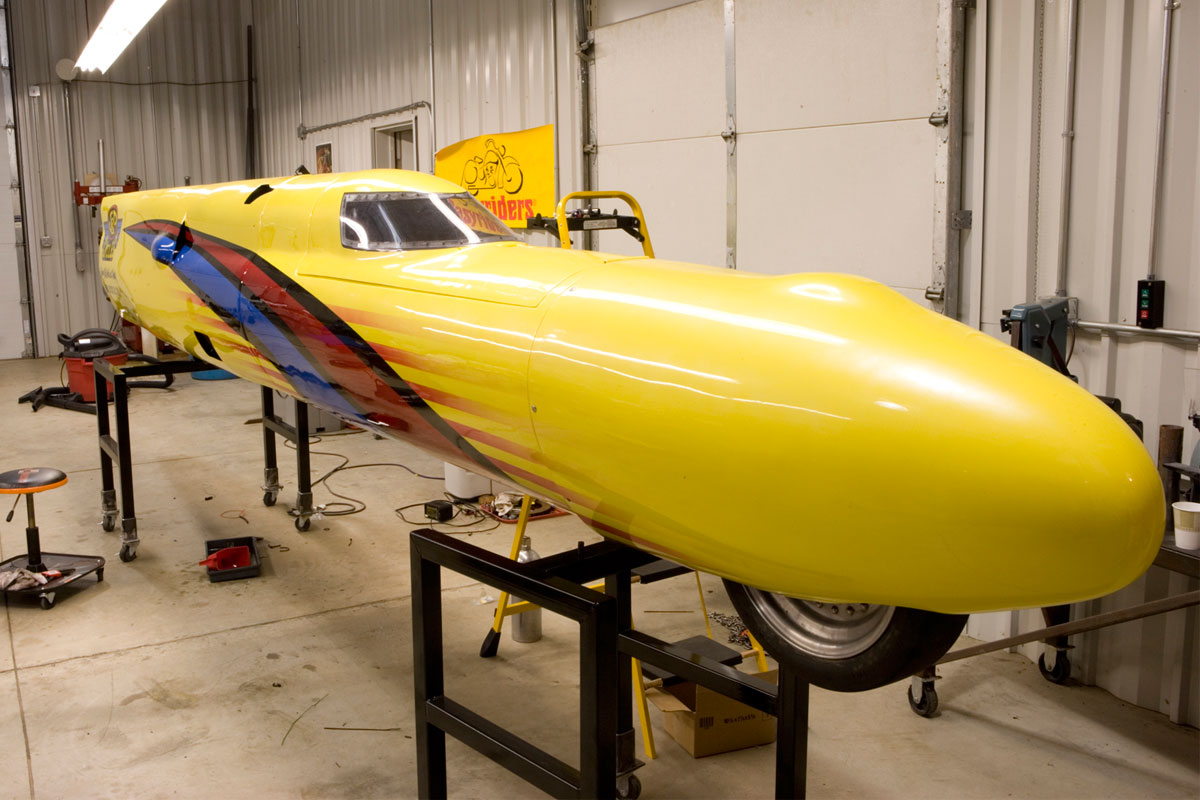
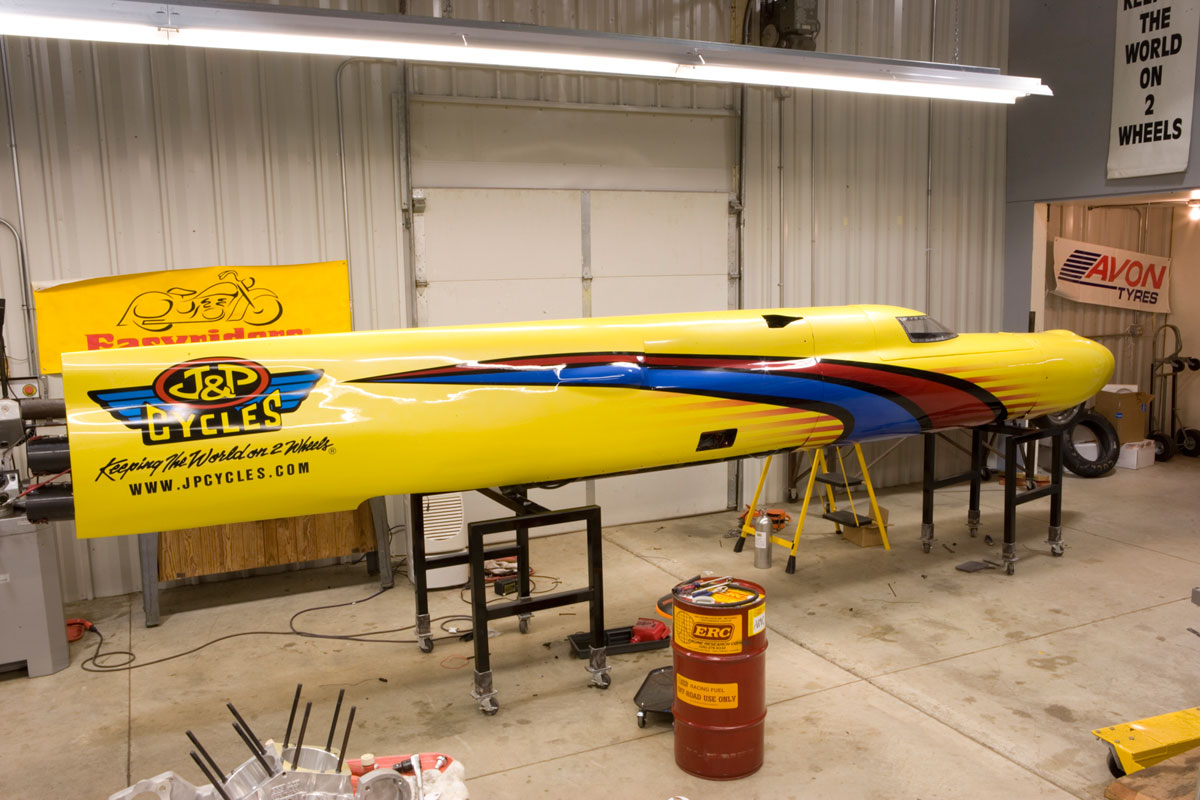
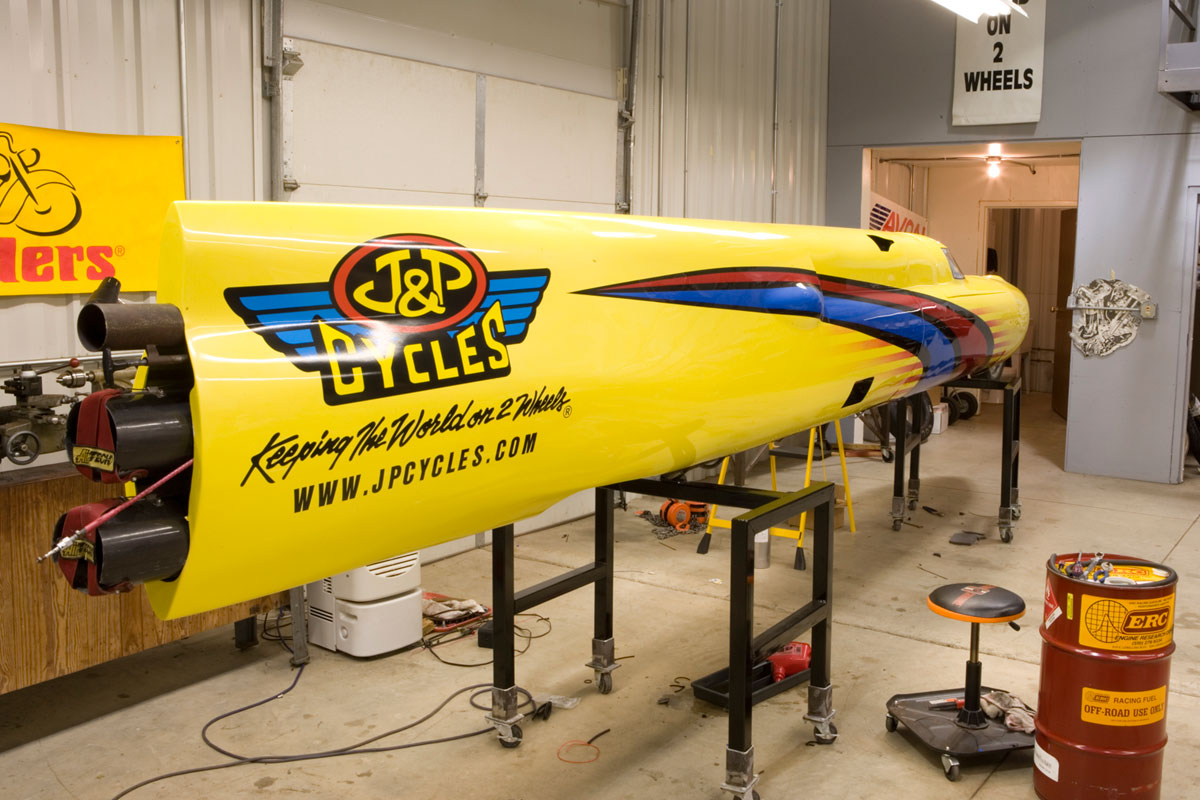
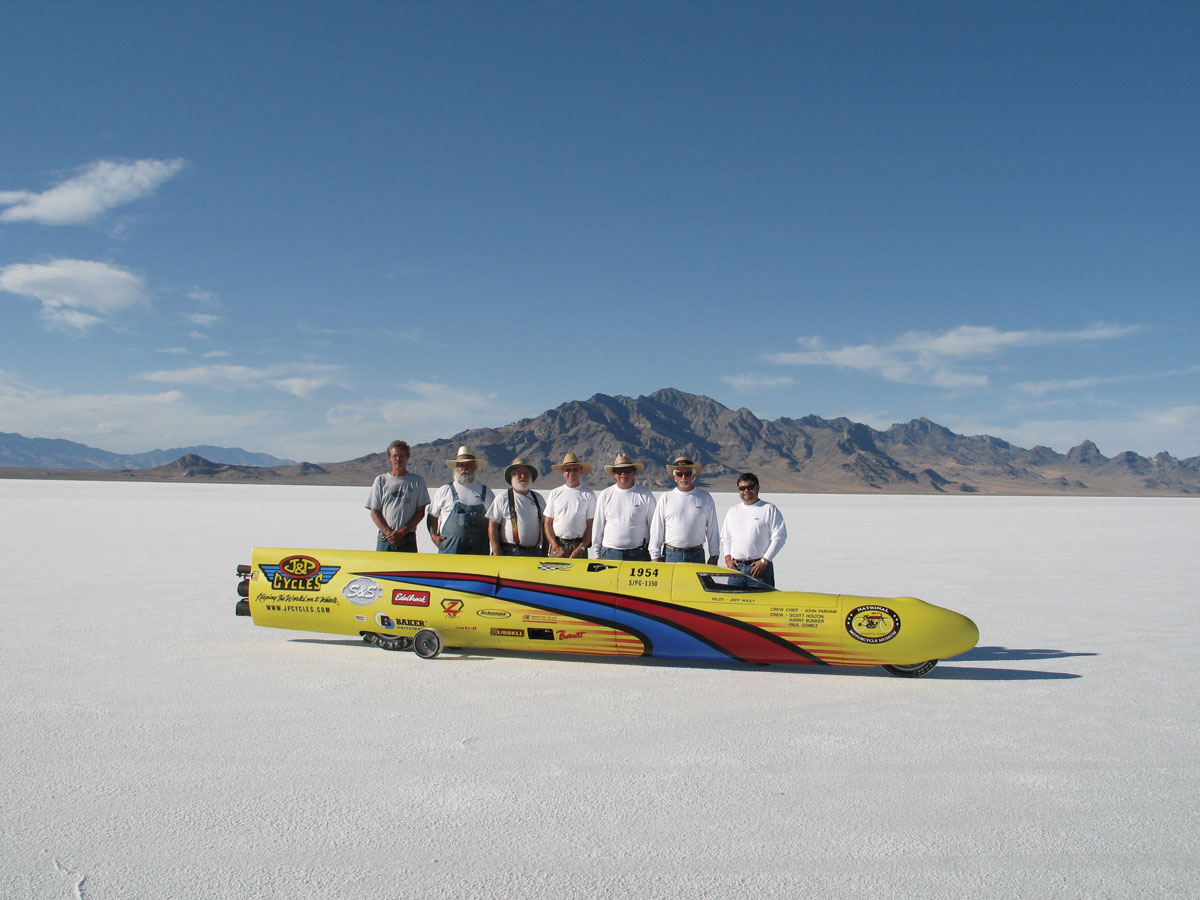
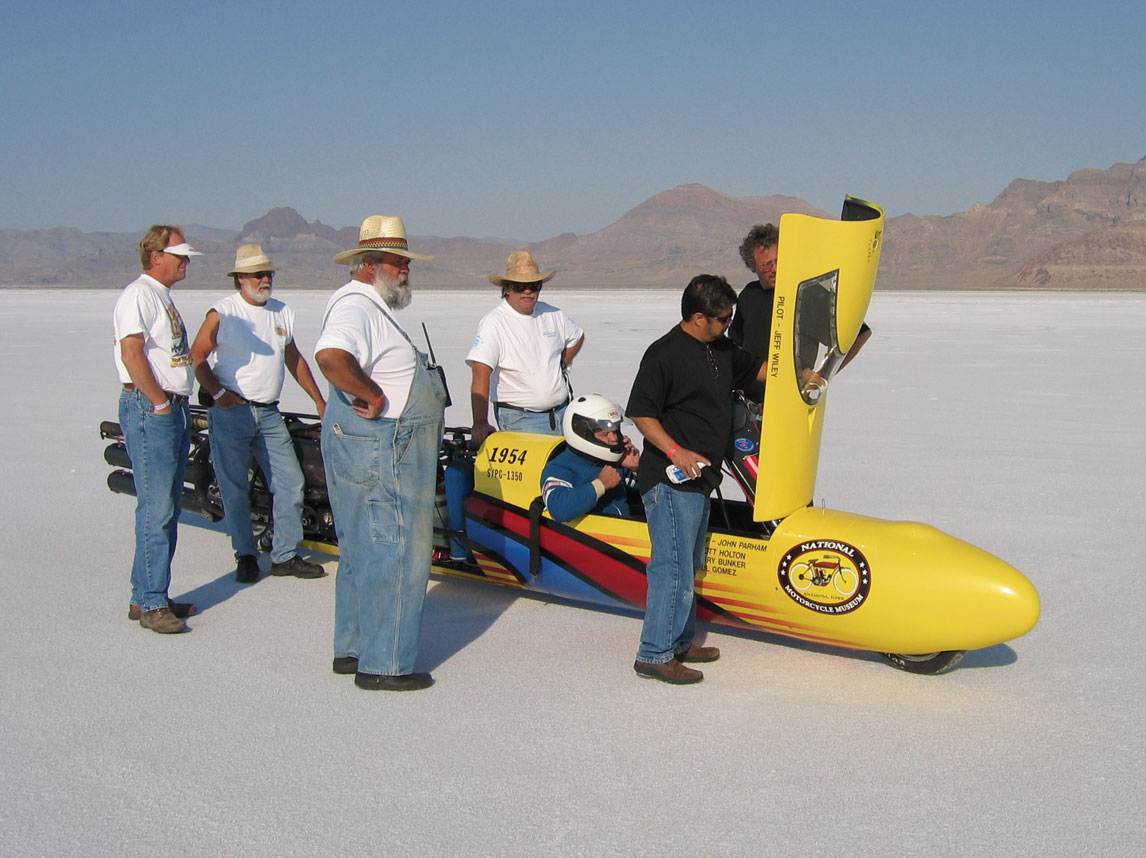
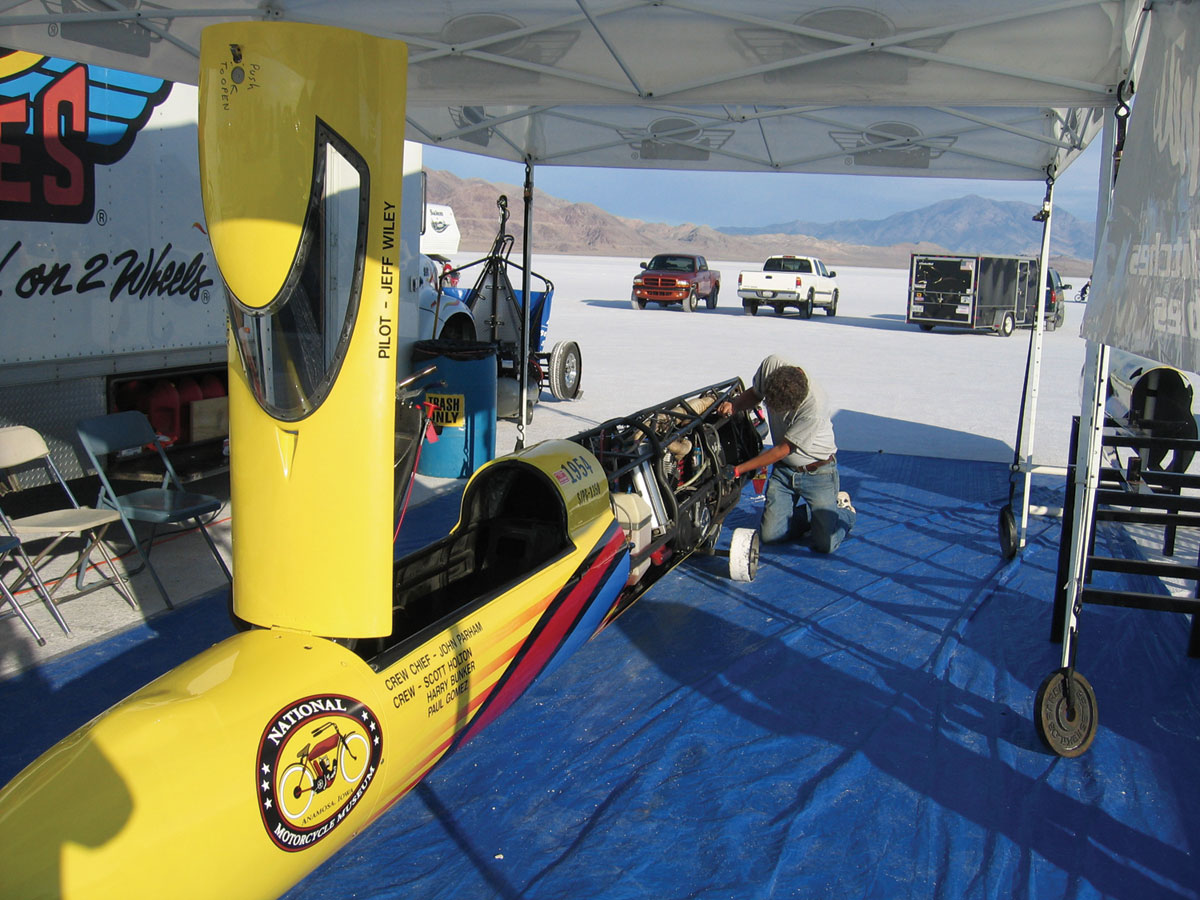
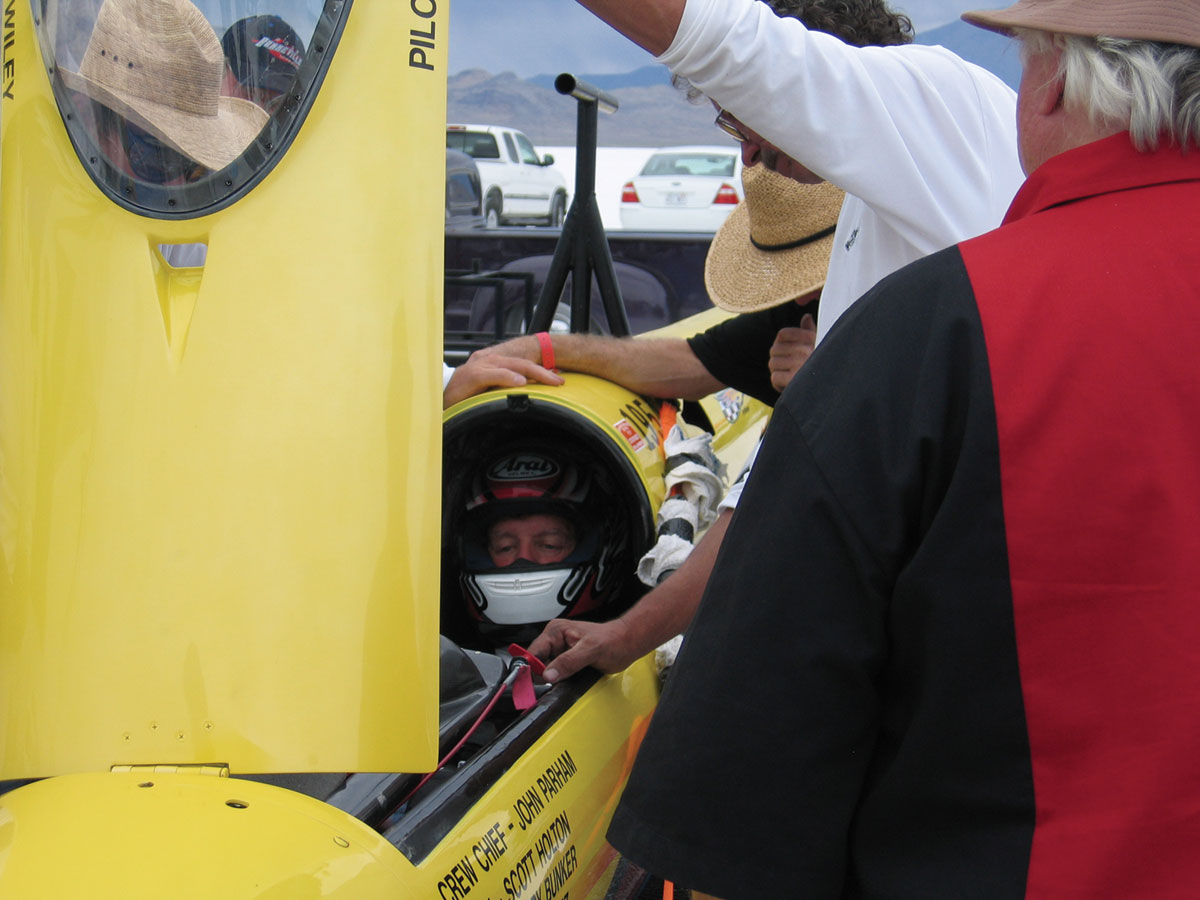
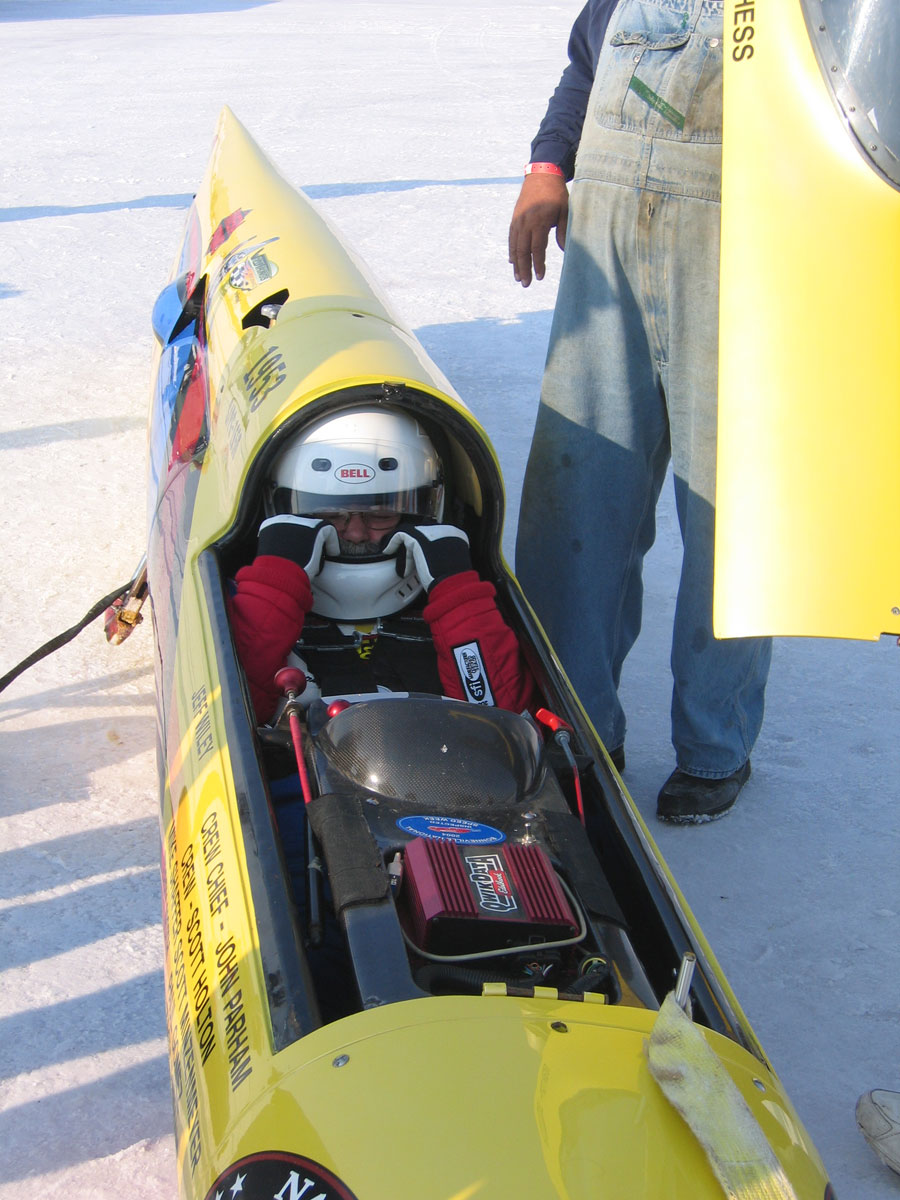
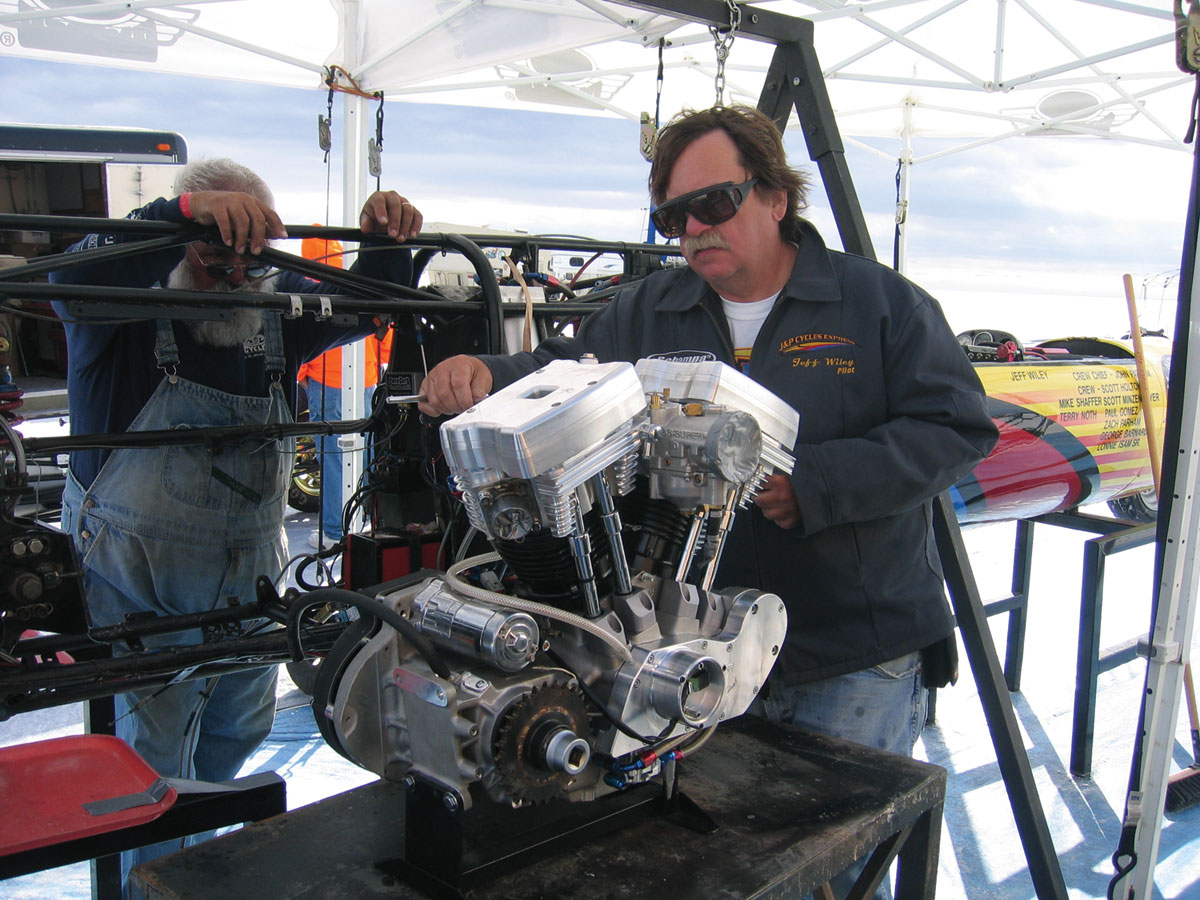
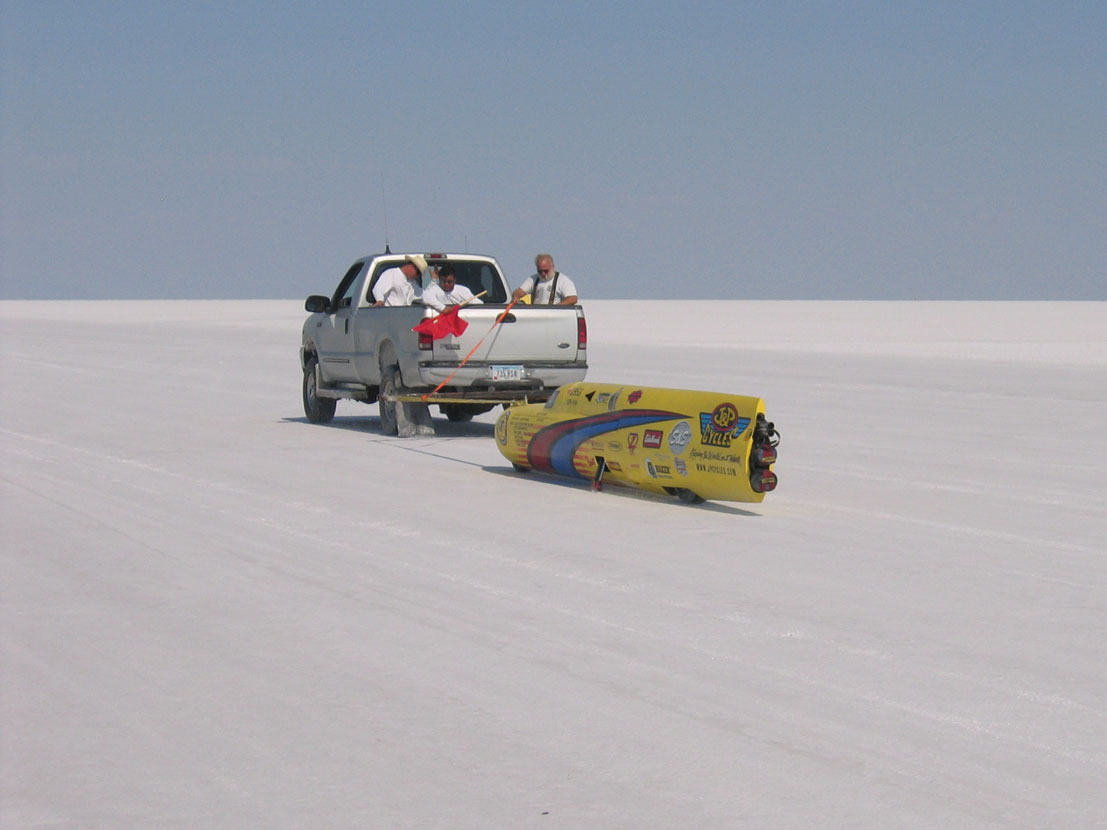
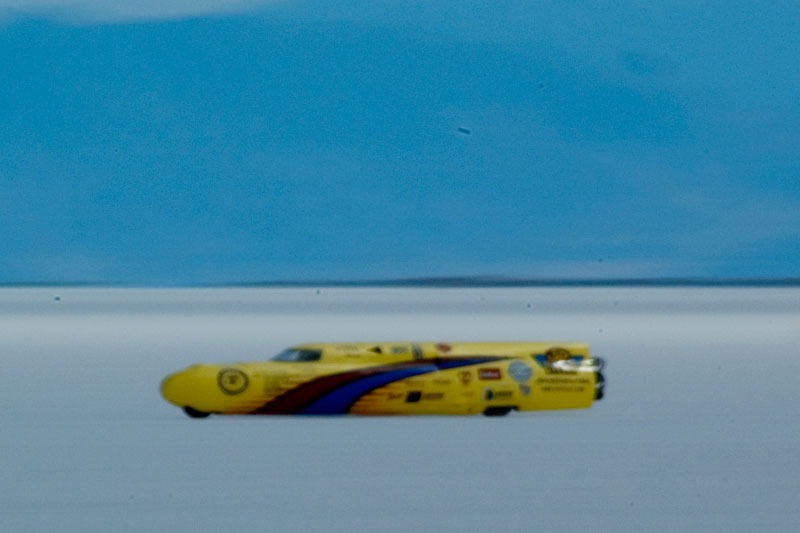
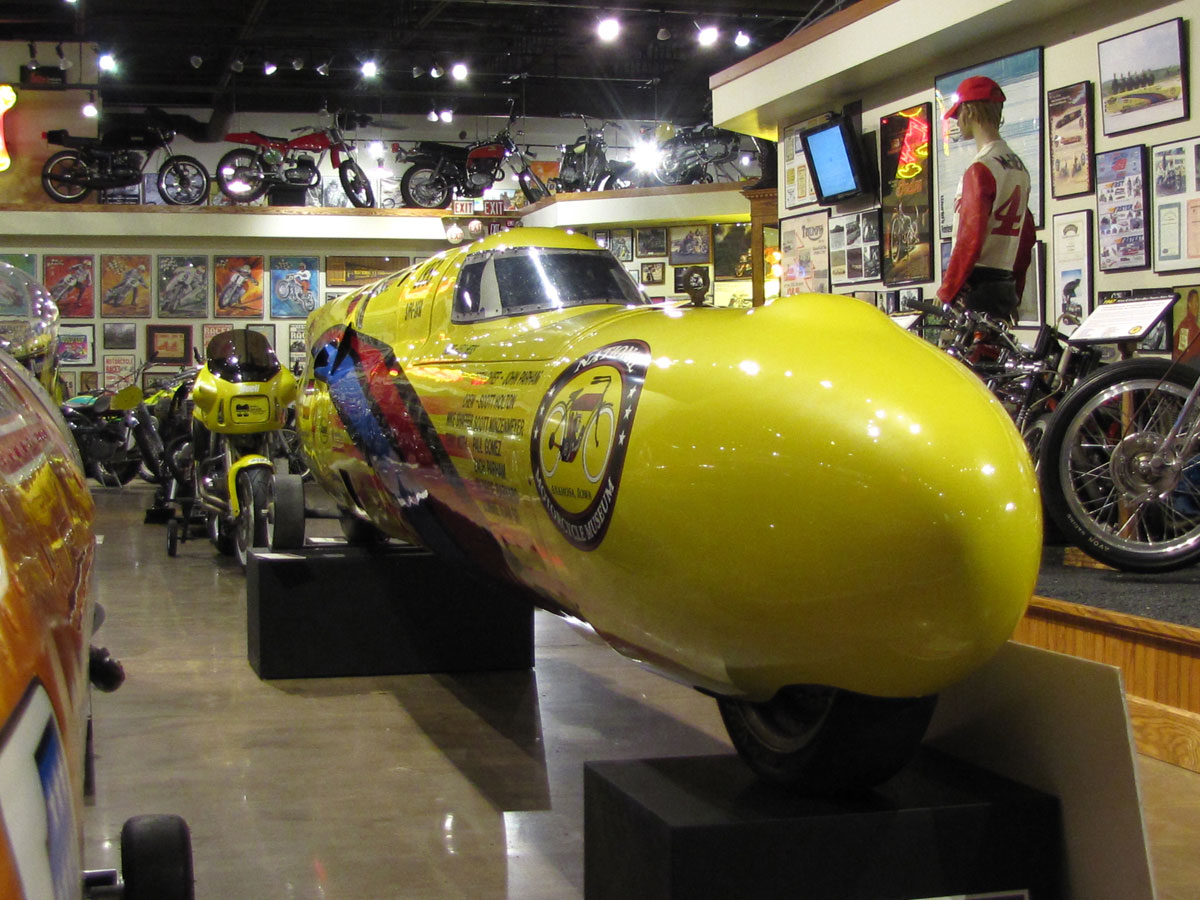
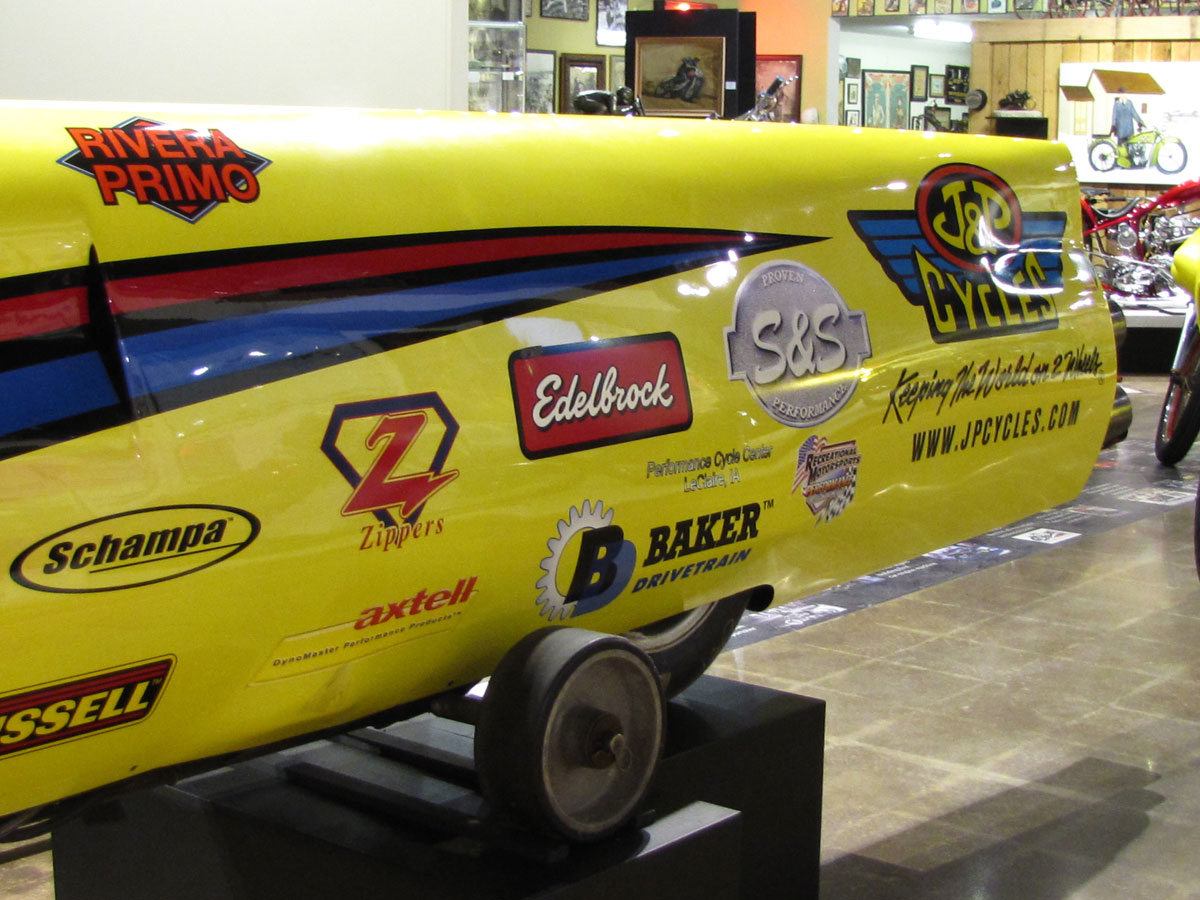
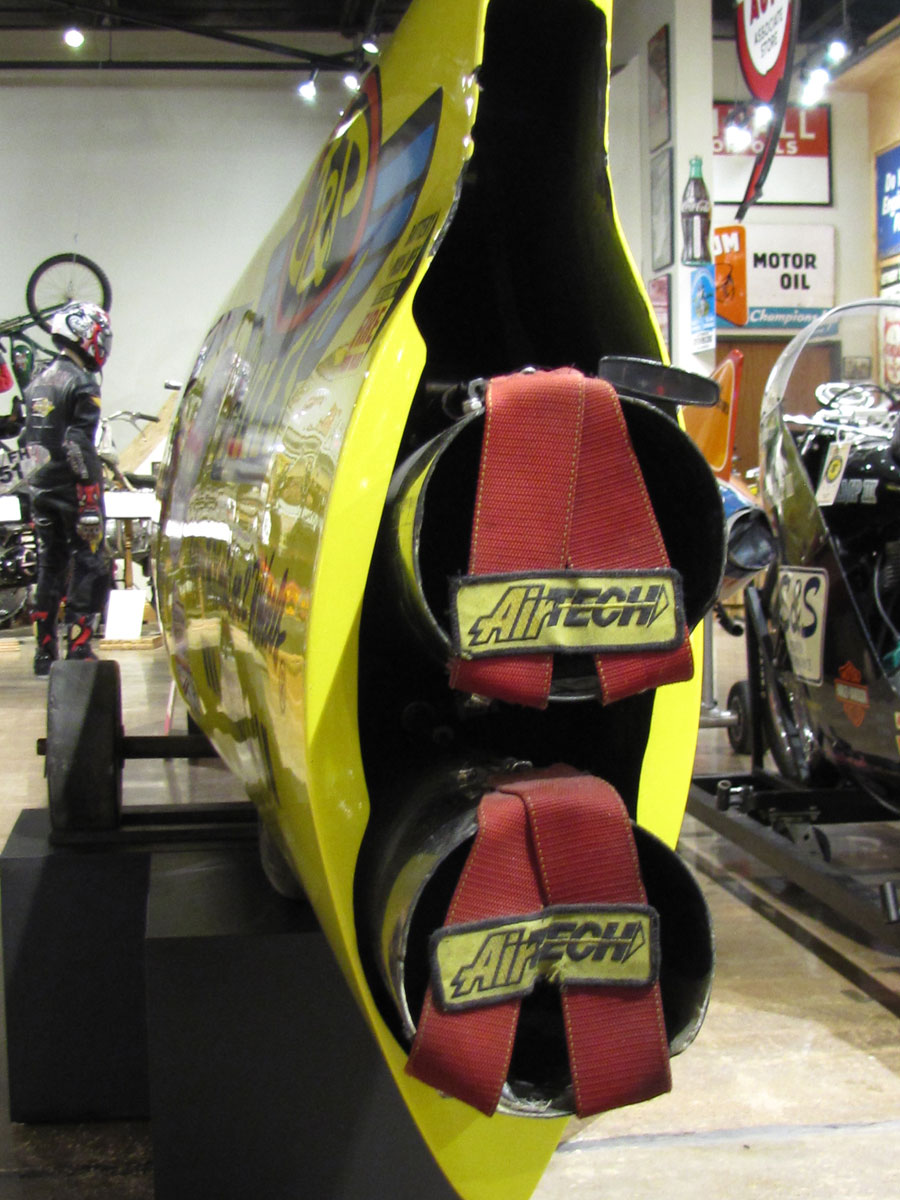
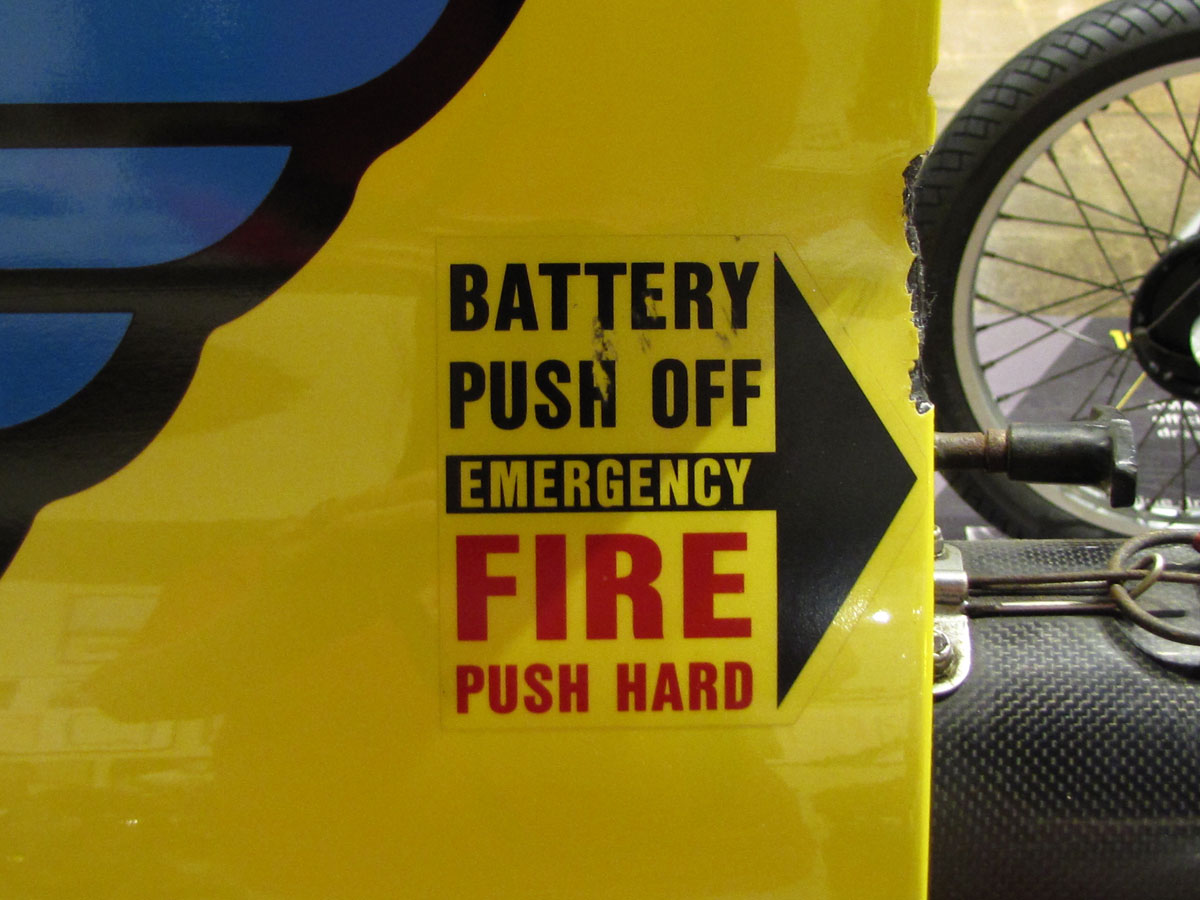
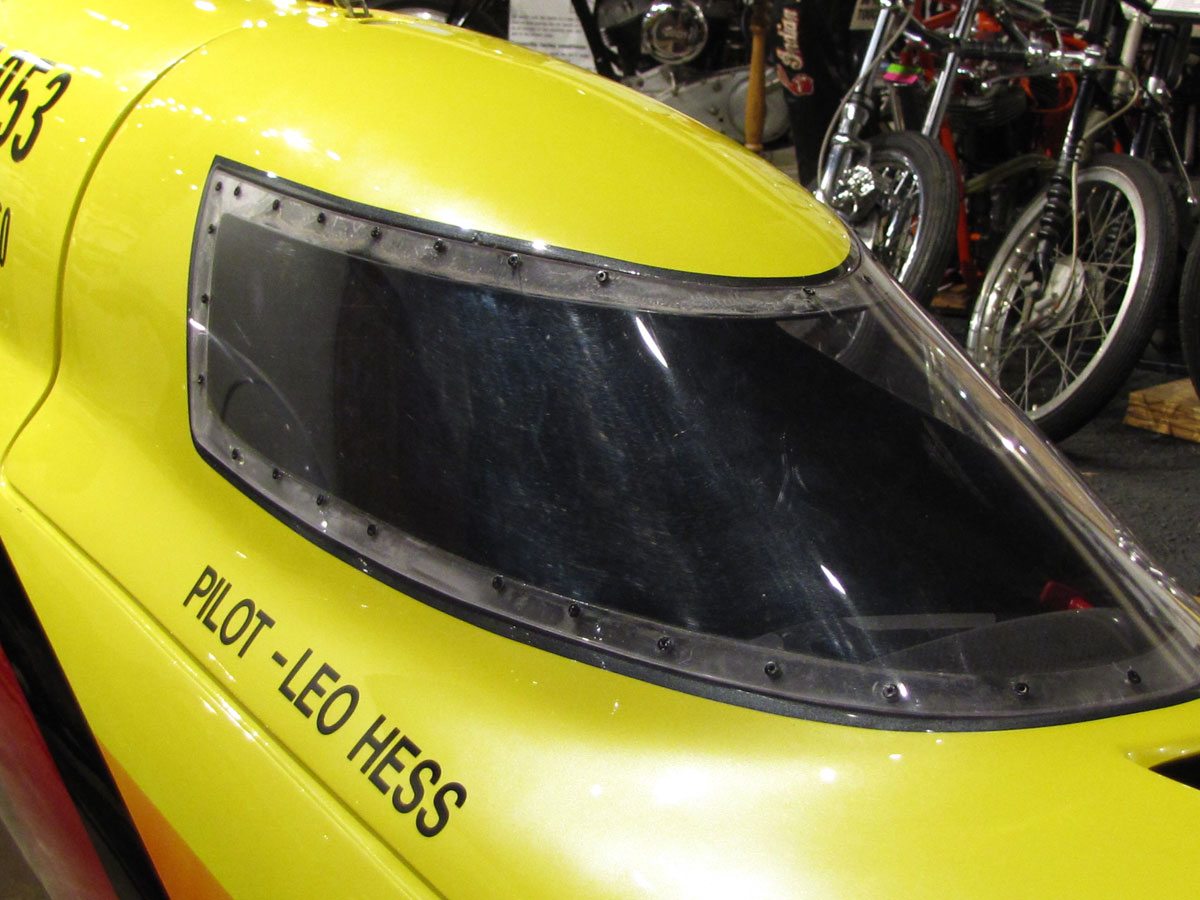
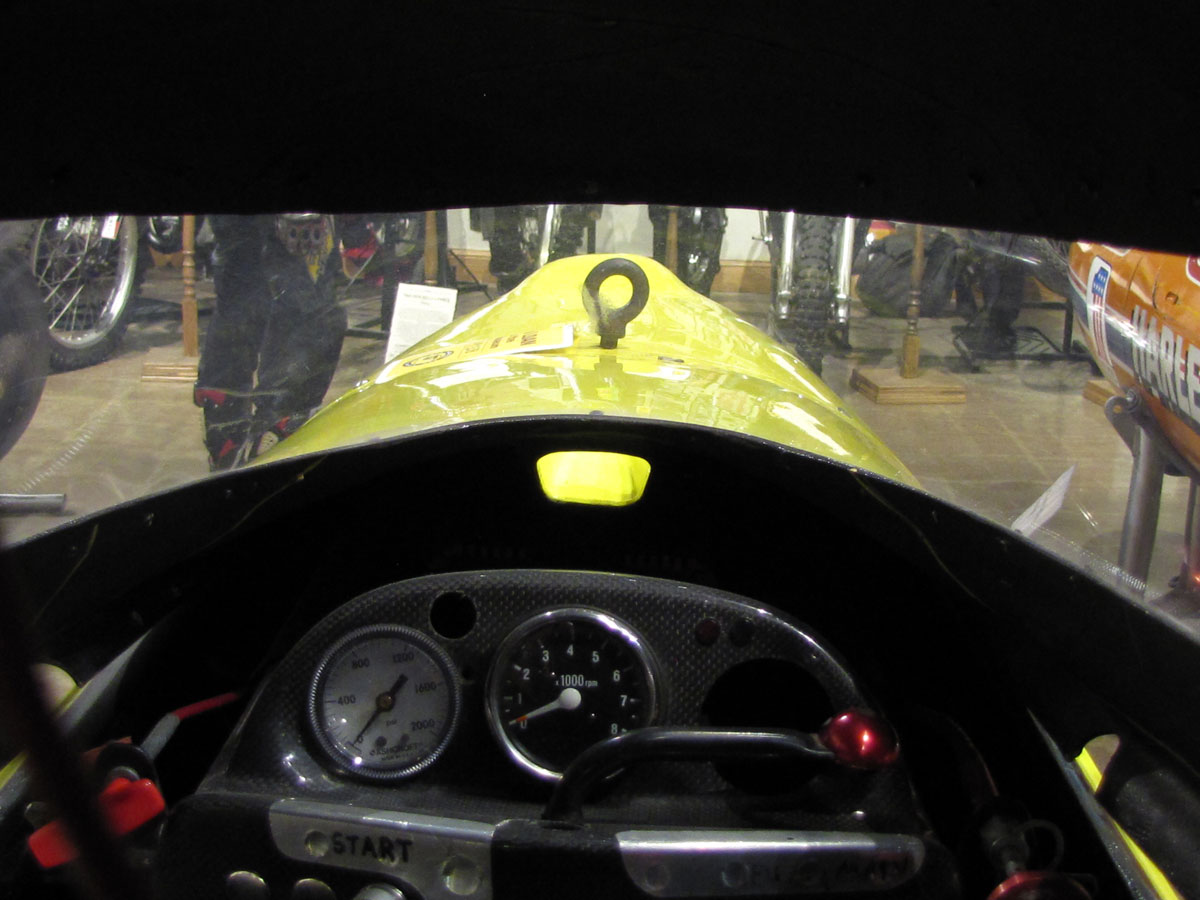
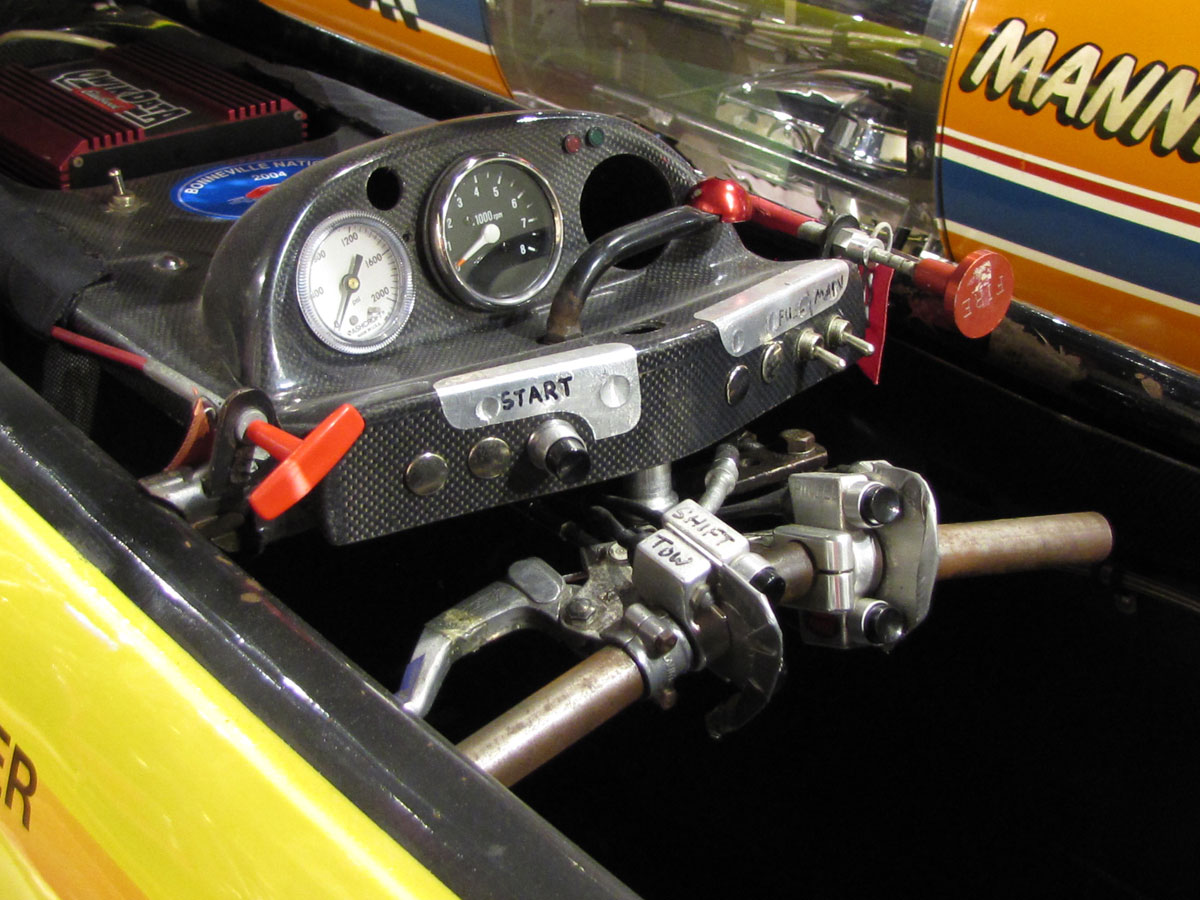

Leave a Reply
Want to join the discussion?Feel free to contribute!